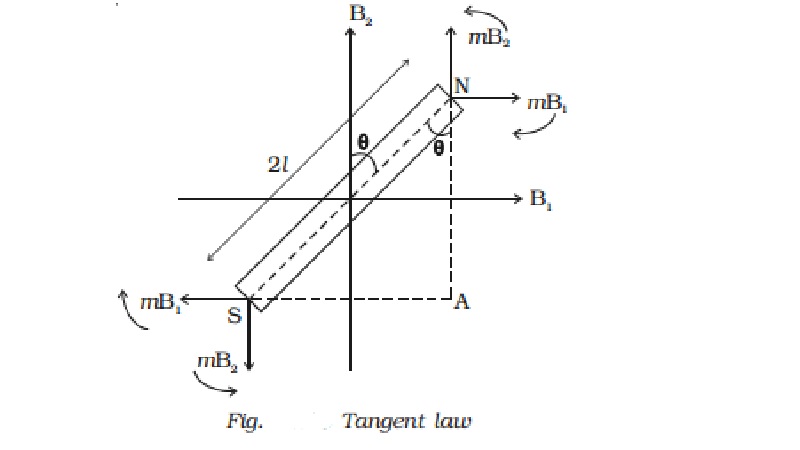Chapter: 11th 12th std standard Class Physics sciense Higher secondary school College Notes
Tangent law

Tangent law
A magnetic needle suspended, at a point where there are two
crossed magnetic fields acting at right angles to each other, will come to rest
in the direction of the resultant of the two fields.
B1
and B2 are two uniform magnetic fields acting at right angles to
each other. A magnetic needle
placed
in these two fields will be subjected to two torques tending to rotate the
magnet in opposite
directions.
The torque τ1 due to the two equal and opposite parallel forces mB1
and mB1 tend to set the magnet parallel to B1. Similarly
the torque τ2 due to the two equal and opposite parallel forces mB2
and mB2 tends to set the magnet parallel to B2. In a
position where the torques balance each other, the magnet comes to rest. Now the
magnet makes an angle ? with B2 as shown in
the Fig.

The deflecting torque due to the
forces mB1 and mB1
τ1 = mB1 ?
NA
= mB1 ? NS cos θ
= mB1 ? 2l cos θ
= 2l mB1 cos θ
τ 1 = MB1cos θ
Similarly the restoring torque
due to the forces mB2 and mB2
τ 2 = mB2 ?
SA
= mB2 ? 2l sin θ
= 2lm ? B2 sin θ
= τ 2 = MB2
sin θ
At equillibrium,
τ 1 = τ 2
MB1 cos θ = MB2 sin θ
B1 = B2 tan θ
This is called Tangent law
Invariably, in the applications
of tangent law, the restoring magnetic field B2 is the horizontal
component of Earth?s magnetic field Bh.
Related Topics